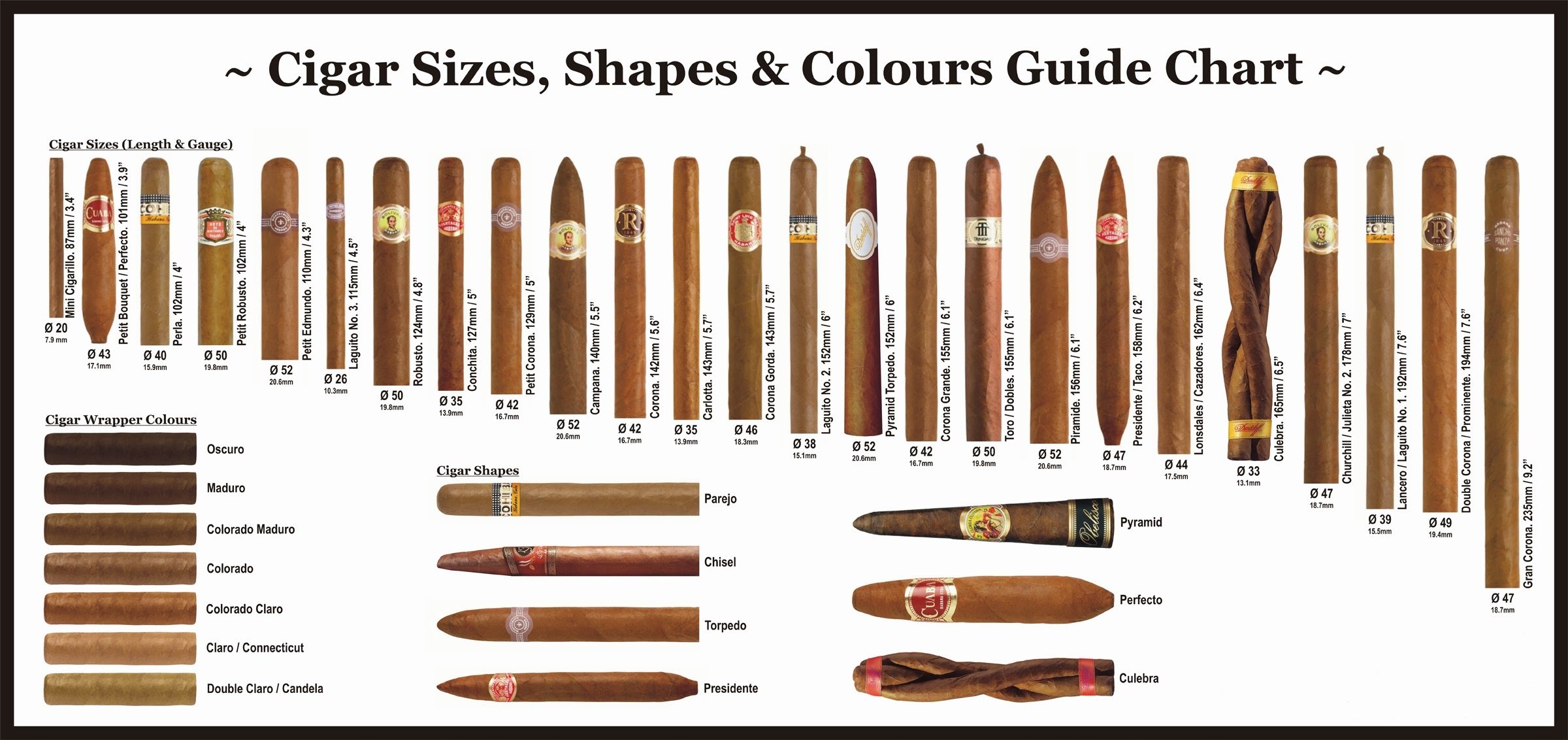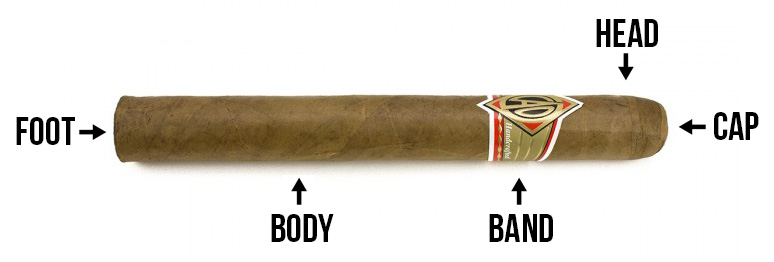A cigar is a tightly-rolled bundle of dried and fermented tobacco leaf, rolled in a series of types and sizes, that is ignited so that its smoke may be drawn into the mouth.
Cigar tobacco is grown in significant quantities in Brazil, Cameroon, Cuba, the Dominican Republic, Honduras, Indonesia, México, Ecuador, Nicaragua, Panamá, the Philippines, Puerto Rico, Canary Islands (Spain), Italy and the Eastern United States. The origins of cigar smoking are still unknown. In Guatemala, a ceramic pot dating back to the tenth century features a Mayan smoking tobacco leaves tied together with a string. Sikar, the term for smoking used by the Maya, may have inspired the name cigar.
TWO BASIC STYLES
Today’s cigars are usually (at least in the premium cigar setting) broken into two distinct styles; Pareo and Figurado (although some would say there are more, those are just variations of these two base styles.)
PAREO
This style cigar features two fairly parallel sides (like a cylinder) with a defined foot and head. The foot is usually cut so that you can easily see all the various tobaccos bunched, bound and wrapped. The head is usually somewhat rounded with a tobacco cap applied. When you cut the cigar to establish airflow, you are removing just the top most portion of the cap, allowing the balance of the cap to hold the tobacco leaves together while you smoke.
The cap is applied and held on with goma (aka “glue”) made from vegetable or, sometimes fruit, pectin.
FIGURADO
Unlike the Pareo style, the Figurado has no cap. It is rolled in such a way that it comes to a point at the head. The foot may or may not be open, depending on the variation of shape. When cutting the head of a figurado, you are actually cutting away enough of the component parts of the tobacco to establish proper draw (aka airflow.)
Figurados are actually much harder to roll than their Pareo counterparts as they must taper to the torpedo like point without having hollow spots. Because they require more skill to roll, they are generally more expensive to produce and thus, cost more per ounce of tobacco than the same exact cigar in a Pareo style.
CIGAR PARTS
 Every premium cigar has three parts; Filler, Binder and Wrapper. The cap on the end of a Pareo is just wrapper leaf that is cut with a punch-like tool and applied with goma.
Every premium cigar has three parts; Filler, Binder and Wrapper. The cap on the end of a Pareo is just wrapper leaf that is cut with a punch-like tool and applied with goma.
FILLER
This is the engine that drives the combustion of your cigar. Filler ingredients can drive the subtle differences in taste and body as they are mixed and bunched.
BINDER
In reality, the Binder leaves are what holds the cigar filler together. It adds structure to the bunched filler leaves. Of course, it comes along for the ride and adds to the flavor and body of the cigar.
WRAPPER
Smooth and blemish free is the first requirement of the Wrapper leaf. It is the leaf you see when you open up a new box of cigars, but it’s far from just a pretty face. The Wrapper tobacco adds 50% to 75% of the flavor to the cigar. it contains vital oils that, when the tobacco is burned, release everything that went into creating this cigar; the days of sunshine during that season, the minerals in the soil, the rainy days at just the right time, etc… The Wrapper leaf is why it’s important to keep your cigars humidified. Dry Filler and Binder tobacco will lose some of their characteristic flavors, but the biggest problem is that they will burn too fast to deliver the proper experience. But, when the Wrapper leaf dries out, those oils that impart the majority flavor dry up and evaporate forever.
CAPS
As was said earlier, the Cap is just Wrapper leaf that has been cut out of a scrap and applied with goma. It holds the head of the cigar together while it rests in the humidor but its biggest job occurs when the cigar is actually smoked.
A Pareo cigar with no cap is certainly smokable, but the tobacco leaves at the head will start to separate and fray in your mouth as you puff. This is annoying at best and compromises the Wrapper leaf as your wet lips tug at the surface, causing the leaf to tear and / or unravel at worst. This is why it is CRUCIAL that you cut your cigar properly! Caps are so serious to cigar makers that some actually triple them up just to make sure they do their job!
As Figurado cigars have no cap, they would seem to be open to the same issues a Pareo cigar with no Cap would bring. However, because of physics and the fact that the very end of the tapered head doesn’t come into contact with your lips as you place the cigar in your mouth, your lips are less likely to tug the Wrapper leaf away from the body at that critical point where it ends.




